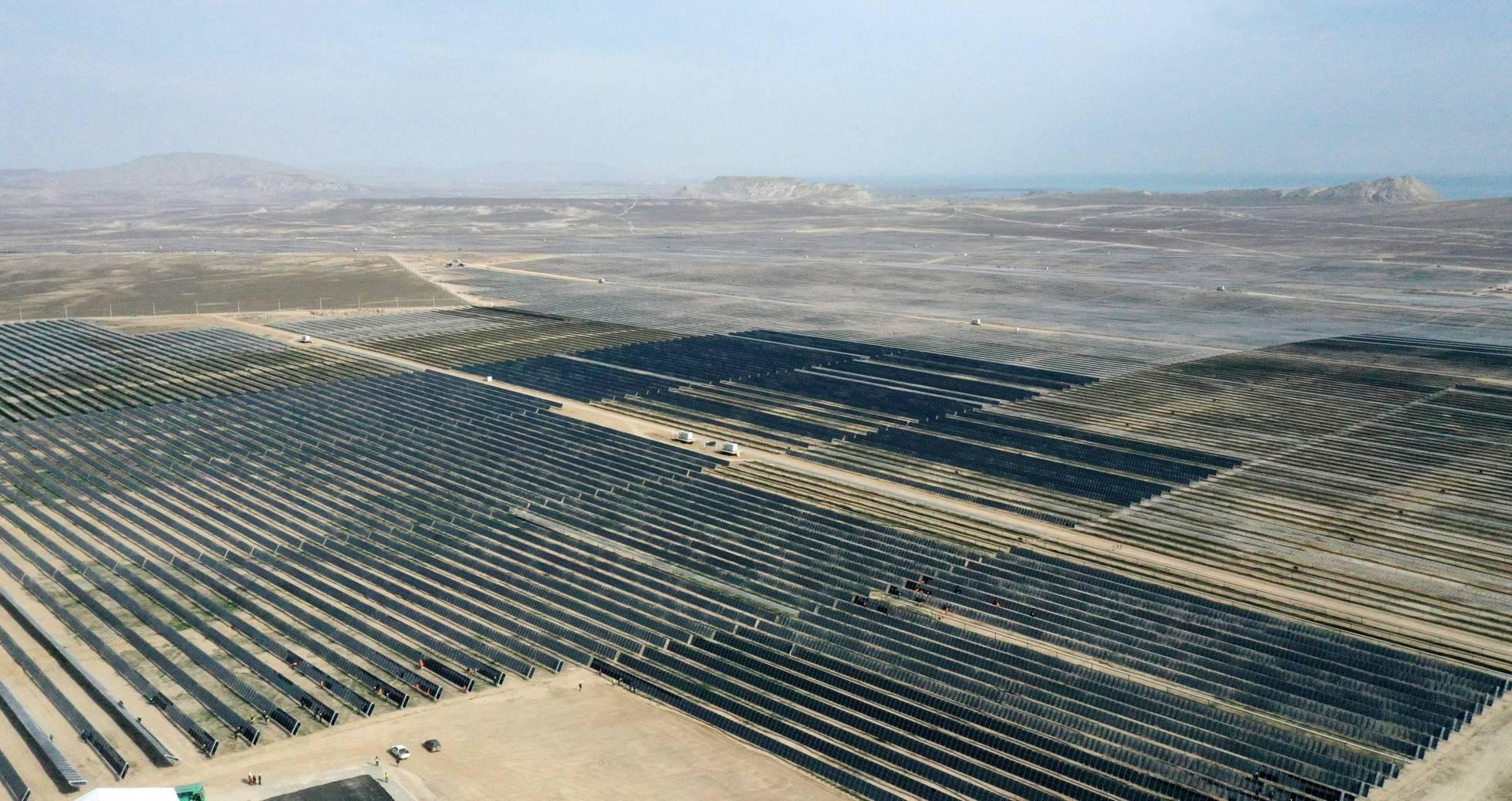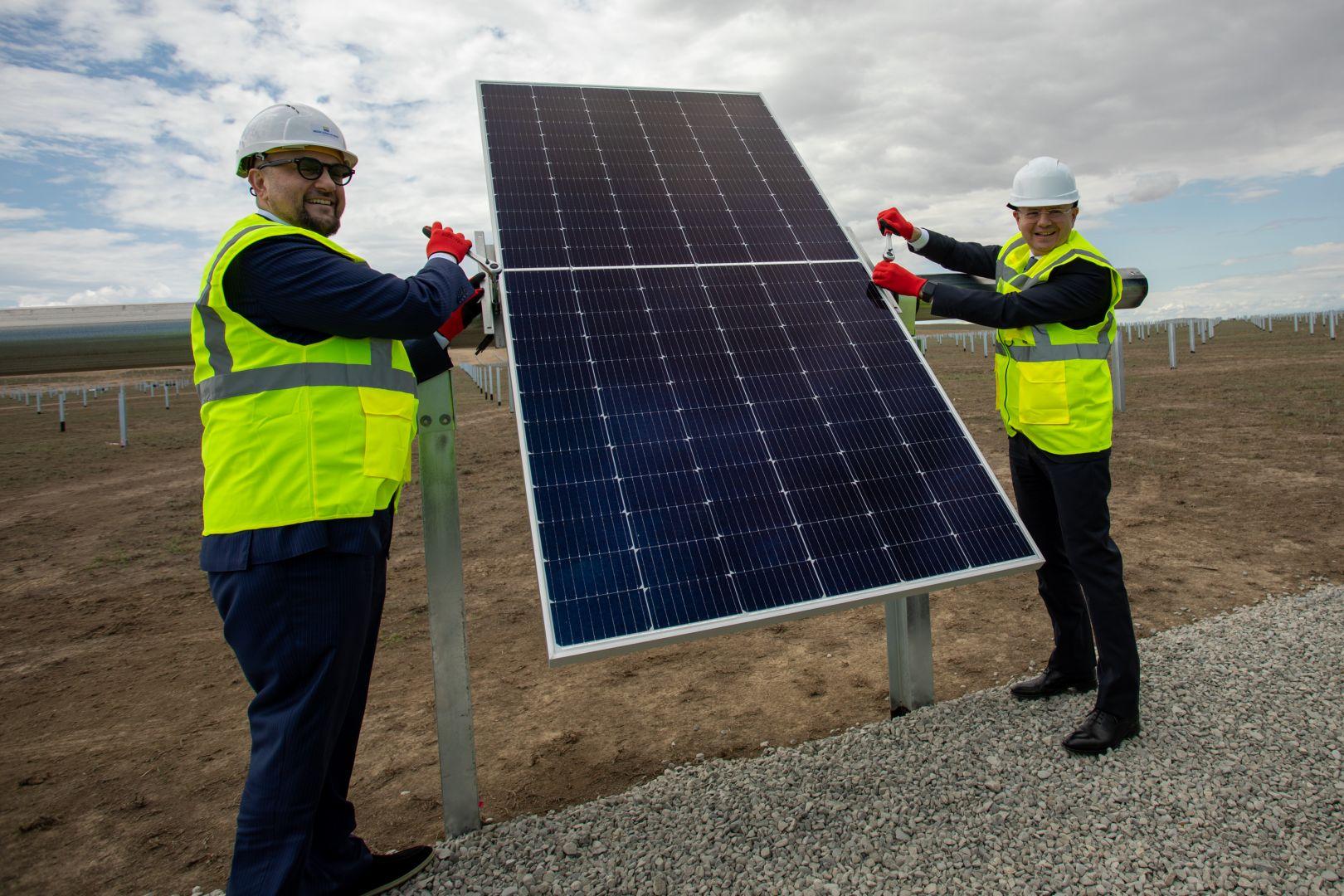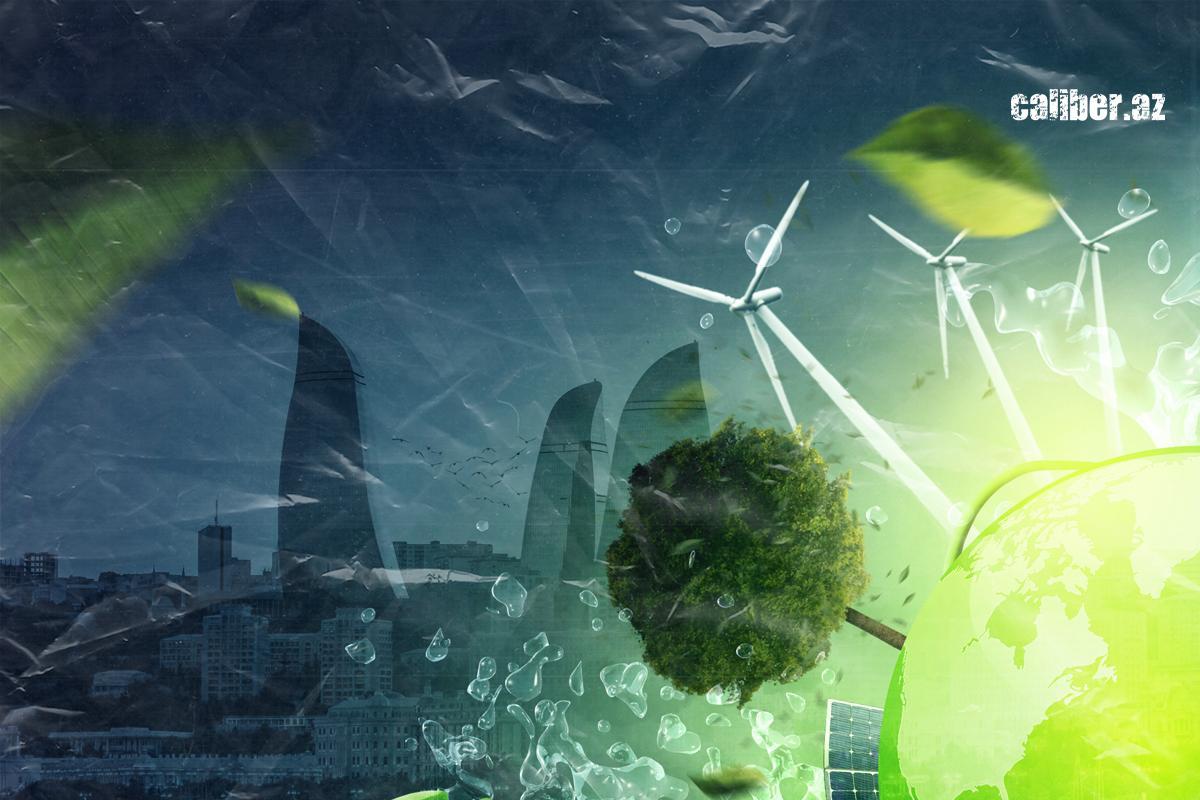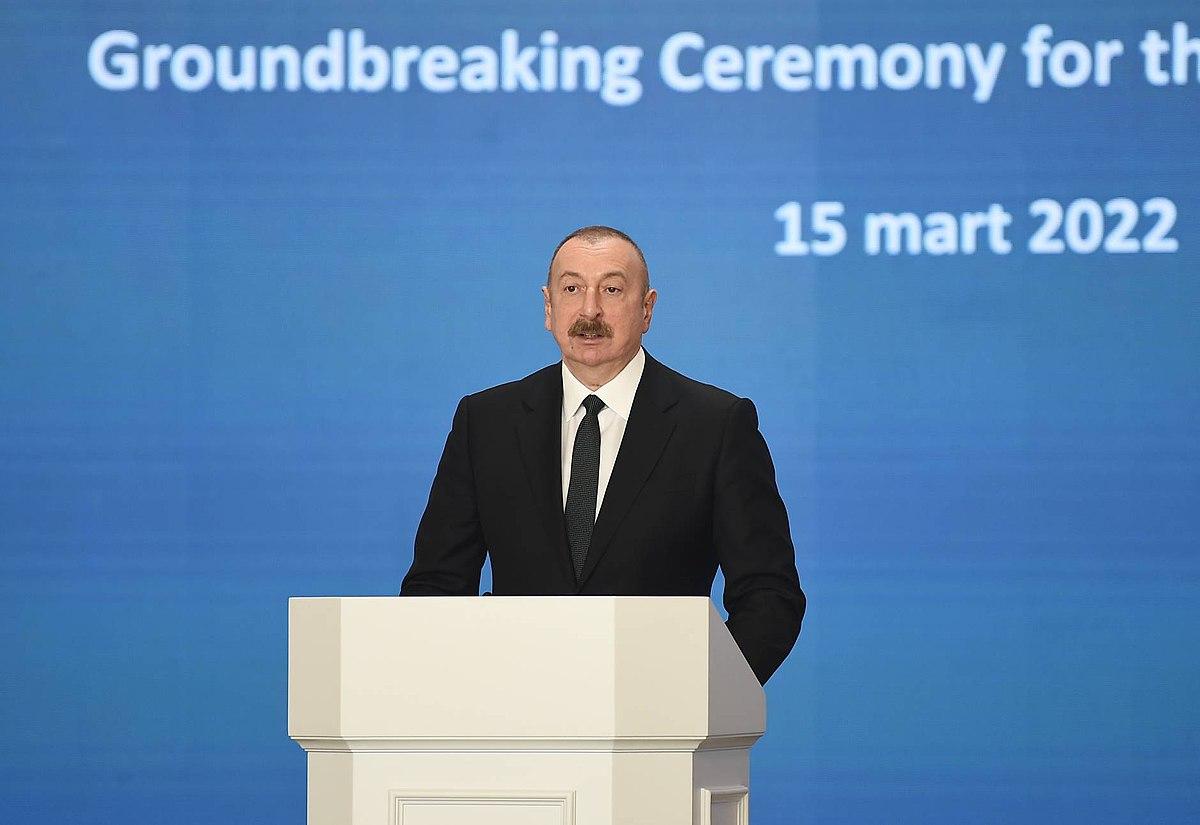Azerbaijan's "green" transition as a beacon for oil-producing countries The Strait Times article
Singapore’s The Strait Times newspaper has published an article by Cheryl Tan on the COP29 climate change conference to be held in Azerbaijan in November this year. Caliber.Az reprints the piece.
A visit to Azerbaijan’s capital city, Baku, where the annual United Nations climate summit will be held at the end of 2024 can be a jarring experience.
From the plane window overlooking the glittering Caspian Sea to a site just behind the Baku Olympic Stadium where the COP29 conference will be held in November, the oil rigs and oil wells are impossible to miss.
Yet, green shoots are visible as well.
In the distant hills of Garadagh, a 230MW-peak solar plant sits on more than 550ha of fallow land that was previously used for grazing.
Developed by Emirati state-owned renewable company Masdar, the project alone has increased the country’s renewable capacity from around 16 per cent of its total energy mix to 20.3 per cent since it was completed in February.

All eyes will be on Azerbaijan’s climate strategy in 2024, given that it will be hosting a major climate conference where the urgency of bringing down fossil fuel use will be in the spotlight.
Oil became the driving force of this state in the 1990s. At the same time, Azerbaijan is actively expanding the use of green energy, aiming to increase the share of renewable energy to 30% by 2030.
Ahead of COP29, which will be held from November 11 to 22, The Straits Times in early June visited Baku, on a media trip organised by the COP29 presidency, to have a closer look at how the country is navigating the green transition.
Similar to Singapore, Azerbaijan’s energy mix includes about 90 per cent from natural gas. Singapore relies on this fossil fuel for about 95 per cent of its energy needs.
Both countries, however, are trying to do more to incorporate cleaner sources of energy into their energy portfolio, although their strategies for doing so are different.
Singapore, for instance, can do only so much to harness more renewable energy due to its lack of land and access to renewable energy from wind or hydropower. As such, it is maximising rooftop and reservoir space for solar deployment, and importing renewable electricity from its neighbours.
Meanwhile, Azerbaijan is ramping up its drive to harness more renewable energy.
Currently, its electricity generation from renewables, which is mainly hydropower, stands at only 7 per cent to 8 per cent of its total energy consumption, owing to intermittency due to nightfall or when there is cloud cover.
But the country has eight more projects of around 2GW, or 2,000MW, of wind and solar power generation in the works, highlighting its vastly untapped renewable potential.

Mr Kamran Huseynov, deputy director of Azerbaijan Renewable Energy Agency, which is under the country’s Ministry of Energy, told reporters: “We had the initial target of achieving 30 per cent renewable capacity by 2030, but we intend to add these 2GW of clean energy by 2027, 2028... If you add it to the grid, we would have reached around 32 (per cent), 33 per cent (of renewable capacity).”
Mr Hikmet Hajiyev, the foreign policy adviser to President Ilham Aliyev, said that with the annual climate summit now looming closer, the country hopes to demonstrate that it is “leading by example” in its green energy transition, despite it being a fossil fuel exporter and its long history with oil.

Azerbaijan also hopes to transform its economy and become a renewable energy exporter, Mr Hajiyev added.
To do so, it has been “working very hard” and studying all “components and configurations” of its economy to determine if it would be feasible for them to reach net-zero emissions by 2050 at the earliest, he added.
Many governments, including those in Singapore, Japan, the European Union (EU) and Australia, have outlined long-term targets of bringing down their carbon emissions to net zero by 2050 under the Paris Agreement, the world’s climate treaty.
This target is in line with climate scientists’ recommendation of capping global warming at 1.5 deg C above pre-industrial temperatures, which can help the world avert the more catastrophic impacts of climate change.
Azerbaijan’s goal is to cut emissions from 1990 levels by 40 per cent by 2050, though this will be contingent on international support through technology transfer, financing and capacity building.
A lighthouse for climate action
Azerbaijan’s renewable push has put it in good stead to meet the global goal of tripling renewable energy capacity by 2030 and doubling energy efficiency by 2025.
This was a pledge which some 133 countries had agreed to at the COP28 climate summit in Dubai in 2023 that can help the world propel away from fossil fuels within this decade.
A spokesman for the International Renewable Energy Agency said that Azerbaijan is among the first to commit to this goal, and is making good progress.
Observers whom ST spoke to noted that Azerbaijan has created a favourable regulatory environment that helps attract foreign investments to its burgeoning renewable energy sector.
While the government does not directly invest in renewable energy projects, project developers are given incentives such as free land leases for projects that produce 100MW or more of clean energy, said Mr Huseynov.
Clean energy generated from each plant will have a guaranteed electricity buyer, that is AzerEnerji, the state-owned electricity producer, he added.
A spokesman for climate research consortium Climate Action Tracker (CAT) noted that these policies are expected to reduce the financial risks and barriers for investors, thereby attracting more foreign direct investment (FDI) for renewables.

At least US$2 billion (S$2.7 billion) to US$2.5 billion would have been invested in Azerbaijan’s upcoming pipeline of renewable energy projects, many of which involve Emirati and Saudi companies.
“This influx of investments will create jobs, foster technological growth, and drive overall economic development in Azerbaijan,” said the CAT spokesman.
Dr Kim Jeong Won, a senior research fellow at NUS’ Energy Studies Institute, said that other developing regions, including South-east Asia, may need to follow Azerbaijan’s strategy of boosting FDI in the renewables sector as these projects require large private sector participation due to the relatively high upfront investment costs.
Azerbaijan is also looking to use its renewable energy to produce green hydrogen and ammonia, and export some of its clean power to its neighbours via undersea pipelines, said Mr Huseynov.
In total, it has around 27GW to 28GW in preliminary green electricity deals with foreign companies, he added.
The key project being studied is a green energy corridor that will transmit at least 4GW of clean energy from Azerbaijan to Georgia, Romania and Hungary via an undersea submarine cable of almost 1,200km in length. Feasibility studies will be completed by the end of 2024.
Climate think-tank E3G’s senior policy adviser, Ms Beth Walker, noted that there are many uncertainties, such as security risks and technical concerns, given that the subsea cable is one of the longest. Currently, the longest such cable is in the North Sea Link between Britain and Norway.
NUS’ Dr Kim said that cross-border electricity trade projects can increase revenue for countries with excess renewable electricity, while importing countries can meet their greenhouse gas emissions targets in a more cost-effective way.
Such a grid is also being explored for the South-east Asian region, although similar regulatory, technical and financial hurdles continue to affect its development. This will help countries to better meet the global goal of transitioning away from fossil fuels, and help limit global warming to 1.5 deg C above pre-industrial levels.
However, to prevent an overreliance on foreign capital, Dr Kim said the government should also develop the capacity of local companies in its renewable sector.
It will also need to step in to develop and upgrade the grid infrastructure, so more renewable energy sources can be connected to the grid and contribute to meeting the country’s growing electricity needs, she said.
Traditionally, attracting investments in grid infrastructure can be challenging as such projects are considered marginally bankable – meaning that they are less profitable than renewable energy plants and might not be able to attract private sector financing.
But without these infrastructural upgrades, Azerbaijan cannot pursue a more ambitious renewable energy target at this juncture, which would mean that domestic renewable capacity is capped at around 30 per cent, said Mr Huseynov.
Early investments into battery storage technologies have begun, including a 200MW project by Saudi’s Acwa Power.
Fossil fuel future
Azerbaijan’s renewables sector has been growing at a fast pace, but so has its gas production.
While the Azerbaijani government has a strong will to promote its non-oil and gas sectors, old incentive schemes for the oil and gas sector and its abundance of fossil fuels still make the industry attractive to investors, said Dr Kim.
For instance, export-oriented oil and gas have property and land tax exemptions.
As it stands, oil and gas are expected to play a continued role in Azerbaijan’s economy in the short to medium term.
In 2023, Azerbaijan exported 23.8 billion cubic m (bcm) of gas – close to half of its domestic production – mainly to Europe (11.8 bcm), Türkiye (9.5 bcm) and Georgia (2.5 bcm). It has also signed an agreement with the EU to increase exports of natural gas to 20 bcm a year by 2027, as the bloc looks to wean off its reliance on Russian gas.

To meet demand, Azerbaijan has been increasing its share of domestic renewables to free up more gas for exports, while investing in new gas fields and infrastructure.
It has also recently struck deals with France’s TotalEnergies and the Abu Dhabi National Oil Company to increase exploration and drilling. An article from news website Politico in April said that Baku has received an additional US$40 billion in FDI to increase its gas exports by 2034.
“Azerbaijan must take action now, and prioritise the development of its renewable resources. The longer-term prospect is to build offshore wind in the Caspian Sea and use this to make green hydrogen for export to European markets, where there is expected to be growing demand in the coming decade,” said the CAT spokesman.
An International Renewable Energy Agency spokeswoman said that green hydrogen and ammonia can help to decarbonise sectors like shipping and heavy industry. “This presents additional export opportunities and (can help to) further diversify revenue sources,” she added.








